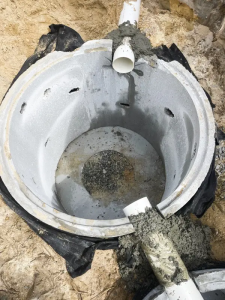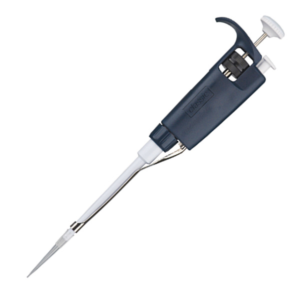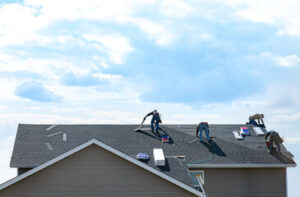The key goal of SEO is to increase your website’s visibility in search engine results pages (SERPs) for relevant queries. This can lead to increased traffic, brand awareness, and sales for your business. Click the https://www.rankboss.com/ to learn more.
The process of seo includes a series of activities that are aligned with overall company and marketing objectives. These activities include:

Keyword research is a vital component of any SEO strategy. It helps businesses align their content with search intent, which increases visibility and improves ranking potential. It also influences content optimization, URL structure, internal linking, and content creation. In addition, keyword research allows businesses to identify competitors and target competitive keywords to improve their chances of outranking them.
Developing a list of target keywords is the first step in keyword research. A common mistake is using keywords that are too broad or irrelevant to your business. Instead, focus on keywords that are more specific and relevant to your audience’s needs.
To do this, start by asking your customer-facing colleagues what types of terms they use to describe your products or services. You can also find keyword ideas by exploring online forums that attract your audience. For example, Reddit is a popular platform for discussing topics and sharing opinions. To get the most out of your forum search, consider joining subreddits that are closely related to your topic of interest.
Once you have a list of keyword ideas, perform a keyword difficulty analysis to determine how difficult it will be to rank for these keywords. This will help you avoid wasting time trying to rank for keywords that are too competitive. It’s also important to reevaluate your keywords on an ongoing basis. Search engine algorithms are constantly changing, and it may be more or less challenging to rank for certain keywords as time passes.
For ecommerce sites, it’s important to target keywords that are relevant to your product and service. The goal is to attract motivated buyers who are close to making a purchase. This is why it’s so important to understand your audience and what they want from your website.
A keyword research tool can help you generate a list of relevant long-tail keywords that will bring in targeted traffic. You can also do keyword research on your own by entering a few core keywords into Google and looking at the search results. Pay attention to the “People also ask” and “related searches” sections, which can reveal valuable long-tail keywords that you can target.
On-page optimization
On-page optimization is the process of optimizing a web page to improve its search engine rankings. This includes using targeted keywords in content and metadata, improving content structure, and ensuring the page is user-friendly. On-page SEO is a crucial part of any online marketing strategy, and it can help your website rank higher in search results.
Increasing your website’s ranking in search engines will drive more relevant traffic to your site, and ultimately, increase sales. But, before you can start to see the benefits of on-page optimization, you need to understand the factors that influence SEO rankings. These factors are split into two categories: on-page and off-page. On-page factors include everything you can optimize on your own website, while off-page factors are things that need to be done outside of your website, such as building links and social media marketing.
In addition to keyword research and content creation, on-page optimization also involves the use of proper HTML formatting. For example, using h1> tags for your title and h2> tags for your meta description will make it easier for Google to interpret your webpage. Similarly, it’s important to include your target keywords in the body of your content and use a variety of text formats to ensure that search engines can read your content.
On-page optimization is a powerful method for attracting more organic visitors to your site, and it can be easily implemented with a modern CMS like Contentful or WordPress. However, it’s essential to prioritize quality over quantity when it comes to on-page SEO. Over-optimizing your pages can actually backfire and harm your search engine rankings. Instead, focus on creating high-quality content that addresses your audience’s search intent and provides valuable information.
Link building
Link building is the process of getting other websites to link to yours. This increases the “authority” of pages on your site and helps them rank higher in search engines. The best way to do this is by creating high-quality content that people want to link to. This may include a helpful blog post, infographic, or tool. You can also use tools such as Semrush to find high-quality link prospects. These tools will help you analyze competitors and identify keywords that you can target. Once you’ve identified potential prospects, you can reach out to them to ask for a link.
While many businesses think of link building as a standalone activity, it’s actually part of an entire marketing strategy. The central goal of this strategy is to create a great experience for users and bring them more traffic through organic search. Ultimately, this will improve the overall experience for your customers and drive more revenue for your business.
In order to achieve this, you’ll need a variety of “linkable assets.” These are resources that are likely to attract links from other sites. These could be a blog post, tool, research study, or graphic. These assets can be created before you begin your link building campaign or during it. Sometimes, they will exist already – but other times, you’ll need to create them with the intent of attracting links in mind.
The key to a successful link building strategy is to make it as natural as possible. This will prevent Google from penalizing you for trying to manipulate the system. Using tactics such as manual link additions (such as posting in forums or communities) and buying links is generally considered to be spammy and can damage your reputation.
Besides, they’re usually not effective in terms of SEO. For example, if you post a link on a competitor’s website that says “click here,” Google doesn’t count it as an endorsement and may penalize your rankings. However, if you post a link on your own website and write a detailed explanation of how it works, Google will recognize it as an endorsement and may boost your rankings.
Content creation
Content creation is a process that involves identifying the right topics and formats for your target audience. It also includes researching the keywords that are most relevant to your business and incorporating those keywords into your content. This will help you attract targeted traffic and achieve your SEO goals.
Whether you’re creating a website, blog post, or whitepaper, it’s important to keep SEO in mind when creating your content. SEO practices can improve your content’s reach, visibility, and performance in search engine results pages. Moreover, they can help you establish authority in your niche or industry.
While the most effective SEO strategies may vary from one business to another, there are some basic principles that all marketers should follow when creating content. For instance, it’s crucial to include the right keywords in your content, as this will increase its visibility and help you rank higher in search engine results pages. You can also use internal linking and social media to promote your content and gain more visibility.
It’s also important to know your target audience and their needs and challenges. This will help you create the right content for them and guide them through the buyer’s journey. Finally, it’s essential to keep up with the latest trends in your industry and market. This will ensure that your content is relevant and up-to-date, which is key to achieving long-term success.
The first step in the process is conducting keyword research. This can be done on your own or by assigning the task to one of your writers. Using keyword tools can help you evaluate the competition, identify potential keyword variations, and understand how your competitors are optimizing their content. This can give you an edge over your competitors and help you improve your own SEO strategies.
Once you’ve finished your research, it’s time to start ideating. This step is a critical part of the process and should involve the entire team. Start by evaluating the demographics, buying habits, and pain points of your audience. You can then create content that meets their needs and drives your business or brand forward.







